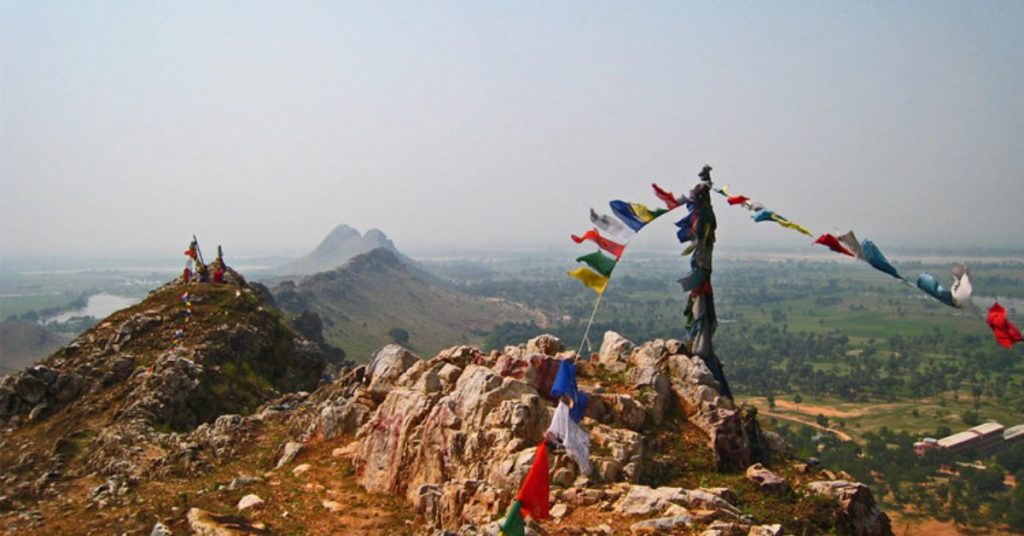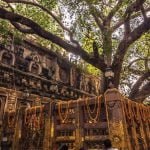Uncover the role of Bodhgaya in the life of Gautama Buddha, the sacred place where he attained enlightenment and began his journey as the Buddha.
Bodhgaya is not merely a geographical location on the map of India—it is the spiritual epicenter of Buddhism, revered across the world as the place where Prince Siddhartha attained enlightenment and became Gautama Buddha. Nestled along the serene banks of the Phalgu River in Bihar, Bodhgaya’s sacred soil bears witness to the most transformative event in the history of Buddhism. It is here, beneath the shade of a Bodhi tree, that a seeker transcended the cycle of suffering and emerged as the Awakened One.
This comprehensive guide explores the profound role of Bodhgaya in the life of Gautama Buddha, tracing the journey from renunciation to realization, and why this town remains a beacon of inner peace, reflection, and spiritual liberation.
The Role of Bodhgaya in the Life of Gautama Buddha

The Journey to Enlightenment: Siddhartha’s Arrival in Bodhgaya
After years of wandering, ascetic practices, and intense meditation, Prince Siddhartha of the Shakya clan found himself disillusioned with extreme austerity. He realized that neither indulgence nor self-mortification led to the truth he was seeking. With newfound clarity, he accepted nourishment from Sujata, a village girl, who offered him kheer (sweet rice pudding)—marking a pivotal shift in his spiritual journey.
Following this, Siddhartha bathed in the Niranjana (Phalgu) River and proceeded toward a nearby grove. There, under a sacred fig tree (Ficus religiosa), he made a solemn vow: “I shall not move from this seat until I have attained full enlightenment.” This marked the beginning of deep, unwavering meditation beneath what would later become the Bodhi Tree.
The Enlightenment of Gautama Buddh
The Bodhi Tree at Bodhgaya stands as a living symbol of liberation from samsara (the cycle of birth and death). According to Buddhist texts, Siddhartha meditated continuously for seven days and nights, confronting Mara, the personification of illusion and temptation, who attempted to break his resolve.
Despite intense inner battles and external illusions, Siddhartha remained grounded in mindfulness and compassion. As the morning star rose on the full moon night of Vesak (April/May), realization dawned—he had penetrated the truth of Dukkha (suffering), its cause, cessation, and the path leading to its end. He had become the Buddha, the Fully Awakened One.
This profound realization is the defining moment of Bodhgaya’s spiritual significance. It is not merely the place of enlightenment; it is the womb of an entire spiritual path that has transformed millions of lives over the centuries.
Mahabodhi Temple: The Living Legacy of Buddha’s Enlightenment
At the heart of Bodhgaya stands the Mahabodhi Temple, a towering architectural marvel that enshrines the Vajrasana (Diamond Throne)—the very spot where Buddha attained enlightenment. Originally constructed by Emperor Ashoka in the 3rd century BCE, the temple complex has undergone multiple renovations, each preserving the sanctity and essence of the site.
Temple Highlights:
- Bodhi Tree: A direct descendant of the original tree under which Buddha meditated.
- Vajrasana Seat: A stone platform that marks the exact location of enlightenment.
- Sacred Lotus Pond: Believed to be the place where Buddha performed walking meditation.
- Ancient Stupas: Symbolic monuments representing the presence of enlightened beings.
- Meditation Park: A tranquil zone for pilgrims to engage in reflection and mindfulness.
Every brick and bell in the Mahabodhi Temple reverberates with centuries of devotion, making it one of the most important pilgrimage sites in the world for followers of all Buddhist traditions.
Teachings of the Middle Path: Born in Bodhgaya
The realization in Bodhgaya formed the foundation of the Buddha’s teachings. From this sacred ground, he began to shape the Four Noble Truths and the Noble Eightfold Path, emphasizing a balanced approach to life—the Middle Way.
Bodhgaya became the birthplace of a revolution in spiritual thought:
- The understanding that liberation lies within.
- The insight that mindfulness, wisdom, and compassion can end suffering.
- The guidance for others to walk the path and discover their own enlightenment.
This transformative wisdom soon spread across Asia and the world, making Bodhgaya not just a location, but a global symbol of awakening.
Bodhgaya as a Global Pilgrimage Destination
Over the centuries, Bodhgaya has evolved into a cosmopolitan spiritual center, attracting pilgrims, scholars, monks, and seekers from all corners of the globe. Today, the landscape is dotted with international monasteries built by Buddhist communities from Thailand, Bhutan, Japan, Sri Lanka, China, Vietnam, and Tibet.
Visitors can participate in:
- Silent meditation retreats
- Sutra chanting under the Bodhi Tree
- Interfaith dialogues and teachings
- Pilgrimage walks to related sites like Sujata Garh and Dungeshwari Caves
These global connections underscore Bodhgaya’s role as the nucleus of Buddhist unity and heritage, transcending language and culture.
Spiritual Significance Beyond Buddhism
While Bodhgaya is fundamentally associated with Buddhism, its universal message of peace, wisdom, and compassion resonates with people of all faiths. Even non-Buddhists find solace in the serenity of the Mahabodhi complex, the simplicity of the teachings, and the palpable energy of the sacred space.
It has become a symbol of:
- Inner transformation through mindfulness
- The power of stillness and reflection
- Breaking free from ignorance and fear
The message of Bodhgaya speaks to humanity as a whole—a call to awaken to our highest potential.
Best Time to Visit Bodhgaya for a Spiritual Experience
The ideal time to explore Bodhgaya is during the cool and pleasant months from October to March. This period also coincides with major Buddhist events such as:
- Kagyu Monlam Chenmo (Dec–Jan)
- International Tipitaka Chanting (Dec)
- Buddha Purnima/Vesak (Apr–May)
These festivals enrich the spiritual atmosphere, offering cultural immersion, Dhamma teachings, and communal prayer sessions.
Nearby Sacred Sites to Visit
In addition to the Mahabodhi Temple, pilgrims and travelers can explore:
- Sujata Kuti: The site where Sujata offered food to Siddhartha.
- Dungeshwari Caves: Where Siddhartha practiced austerities before enlightenment.
- Thai, Japanese, and Bhutanese Monasteries: Architectural wonders and spiritual havens.
- Great Buddha Statue: An 80-ft representation of the seated Buddha in meditation.
Conclusion
Bodhgaya is more than a location—it is a living embodiment of the human potential to awaken. The enlightenment of Gautama Buddha beneath the Bodhi Tree marked not just a personal transformation, but the genesis of a spiritual movement that transcended time, space, and boundaries.
To walk through Bodhgaya is to walk through the footsteps of the Buddha himself. The silence of its temples, the rustle of Bodhi leaves, and the hum of chants in the air all whisper the same message: the path to enlightenment begins within.






Thank you for sharing this resource. I’ve been exploring how mindfulness can extend into daily life, even in gaming. ZenGamer.net offers thoughtful ways to bring awareness and balance into play.